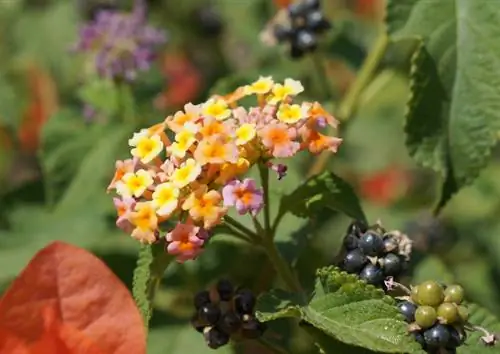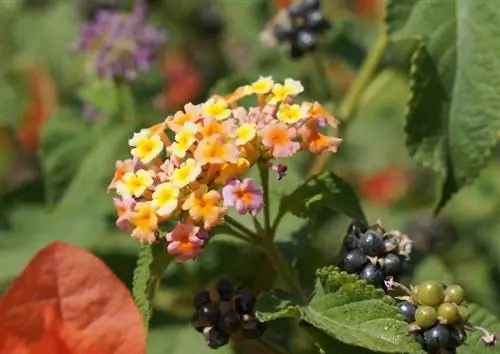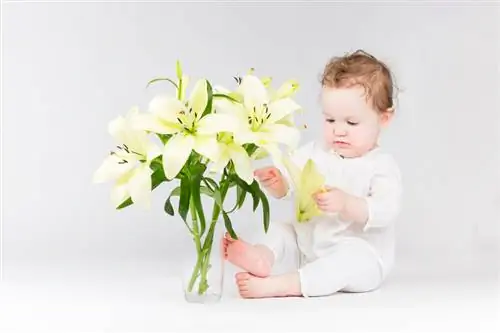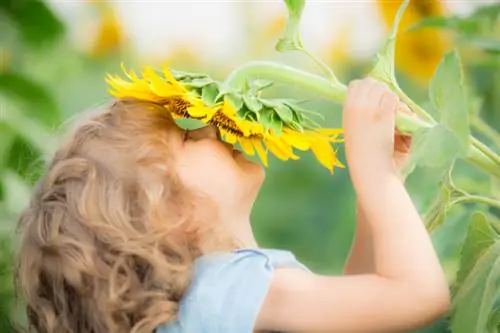- Author admin [email protected].
- Public 2023-12-16 16:46.
- Last modified 2025-01-23 11:20.
The lantana is a verbena plant with attractive umbel flowers that is often found in our green spaces. These change color during the flowering period and gave the ornamental plant its German name. From September onwards, bright black fruits form from them, which can pose a danger that should not be underestimated.

Is lantana poisonous?
The lantana is poisonous to people and animals. The toxins lantadene and triterpene esters are present in all parts of the plant, especially in the black berries. Symptoms of poisoning in humans are similar to belladonna poisoning; phototoxic reactions occur in animals.
The berries are highly poisonous
The toxins in lantana, lantadene and triterpene esters, are contained in all parts of the plant. However, the concentration is highest in the unripe and ripe berries. The symptoms of poisoning are similar to those of deadly nightshade poisoning and are expressed as follows:
- Liver damage
- Disturbance of bile drainage
- Changes in the enzymes of the blood and liver
- This causes the typical features of jaundice such as discoloration of the eyeballs and skin
- Inflammation of the skin (phototoxic effect)
- Pupil dilation
- Diarrhea
- Vomiting
- Uncontrolled muscle reactions
Poisoning in children is always an emergency. If you suspect that your child has eaten lantana berries or plant parts, be sure to consult a doctor.
The lantana is poisonous to animals
Pets and farm animals such as cattle, sheep, dogs, cats and small rodents are also at risk. The toxins have a phototoxic effect on them, which means that the poisoning is caused by the interaction with sunlight. The symptoms are as follows:
- Rash
- Jaundice with yellowing of the mucous membranes
- Liver damage
- bloody diarrhea
- Constipation
- Movement Disorders
- Light sensitivity
The lantana is highly poisonous to animals. Cattle can die within a week if they regularly consume an amount of around 25 grams per kilogram of body weight.
Tip
Since not only the lantana but also many other ornamental plants are poisonous, it is advisable to point out to small children the danger of snacking on unknown plants.






